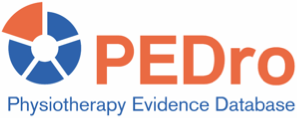This systematic review aimed to estimate the effects of home-based exercises compared to centre-based exercises on improving motor dexterity, recovery, strength, upper-limb movement performance, upper-limb movement quality and participation in people with acute to chronic stroke.
This review included randomised controlled trials that investigated the effectiveness of home-based exercise compared to centre-based exercises for adults at any time after stroke. Eligible trials were identified from seven electronic databases. Trials were included if they compared home-based exercise (at least 2/3 of the exercise was performed at home) targeting the paretic upper-limb with a minimum of 4 sessions over a minimum of 2 weeks and control group of centre-based exercises provided in a hospital, private practice or community centre. Impairments and activity were measured by six outcomes of interest: dexterity (e.g., 9-hole peg test), motor recovery (e.g., The Box and Block Test), strength (e.g., dynamometry), upper-limb movement performance (e.g., Box and Block test), upper-limb movement quality (e.g., Motor Activity Log), and participation (e.g., Assessment of Life Habits). No outcome was nominated as primary.
The review included 8 randomised controlled trials. There were 488 participants aged 55 to 70 years in the acute/sub-acute phase (1 trial), chronic phase (2 trials) and both acute and chronic phase (5 trials). Exercises were completely supervised, semi-supervised in person, or remotely supervised. For home-based exercises, participants trained for 40-120 minutes per session, 5 times per week for 4-13 weeks. The control groups had similar dosages and were performed mainly in clinics.
For impairments, there was no difference between home-based exercise centre-based exercise for upper-limb movement performance for dexterity (MD -0.01 pegs/s, 95% CI -0.04 to 0.05; 5 trials, 212 participants, moderate certainty evidence), motor recovery (MD 1.4 points, 95% CI -0.9 to 3.8; 5 trials, 212 participants, moderate certainty evidence), and strength (MD 0.30 kg, 95% CI -2.4 to 3.0; 1 study, 88 participants, low certainty evidence).
For activity limitations, there was no difference between home-based exercise centre-based exercise for upper-limb movement performance (SMD -0.04, 95% CI -0.25 to 0.18; 4 studies, 328 participants, high certainty evidence) and upper-limb movement quality (MD 0.11 points 95% CI -0.23 to 0.44; 3 studies, 198 participants, moderate certainty evidence).
No studies assessed the effect of home-based exercise and centre based exercise on participation.
Home-based exercise is similar to centre-based exercise in people with stroke for improving dexterity, motor function, strength, upper-limb movement performance and upper-limb movement quality following stroke. This indicates that the location that exercises take place is less important than the amount and type of exercise. This may have implications for people with limited access to healthcare facilities such as those living in rural or remote locations.
Nascimento LR, Gaviorno LF, Brunelli M, Gonçalves JV, da Silva Arêas FZ. Home-based is as effective as centre-based rehabilitation for improving upper limb motor recovery and activity limitations after stroke: A systematic review with meta-analysis. Clinical Rehabilitation 2022, 36(12): 1565–1577. DOI: 10.1177/02692155221121015



